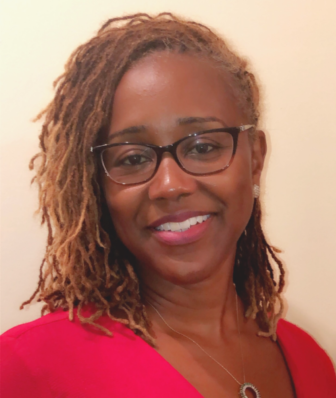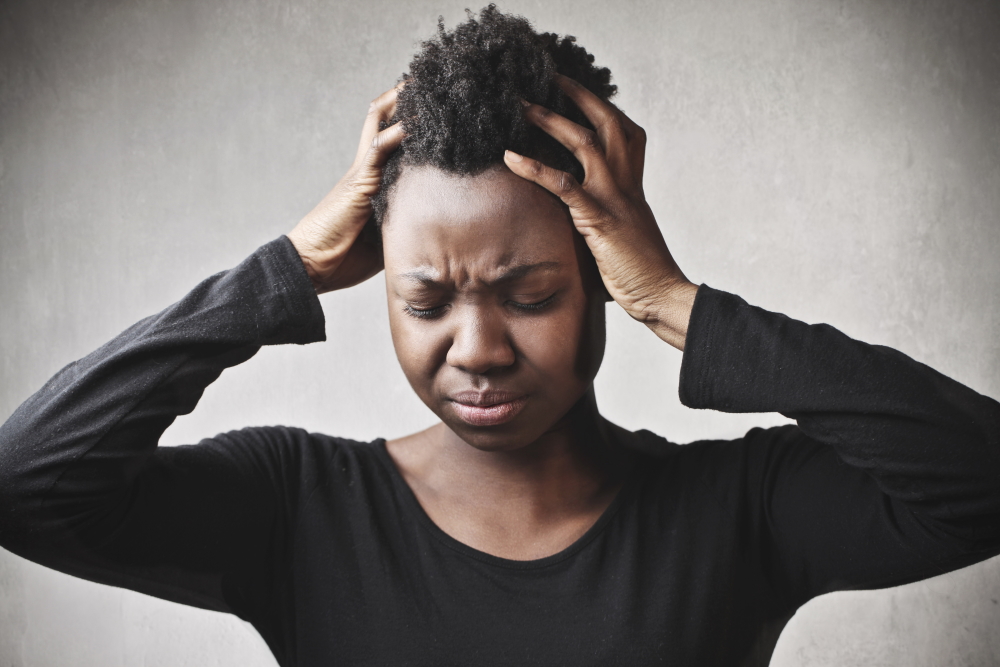![]() The #SayHerName movement that was launched in 2014 by the African American Policy Forum and the Center for Intersectionality and Social Policy Studies has gained immense momentum amid a number of nationally recognized murders of Black women at the hands of police. A goal of the campaign is to bring to light the oft overlooked stories of Black women and girls who have needlessly and unjustifiably perished in their encounters with law enforcement.
The #SayHerName movement that was launched in 2014 by the African American Policy Forum and the Center for Intersectionality and Social Policy Studies has gained immense momentum amid a number of nationally recognized murders of Black women at the hands of police. A goal of the campaign is to bring to light the oft overlooked stories of Black women and girls who have needlessly and unjustifiably perished in their encounters with law enforcement.
#SayHerName is an important, overdue and necessary movement. It is a vigil for Black women and girls who have fatal interactions with the legal system and is crucial to honoring those lost and to educating society on the all too common, yet underacknowledged, realities of being a Black female in America.
While we recognize the importance of #SayHerName, we want to shed light on a population of Black girls who are entangled in America’s custodial systems and seemingly missing in plain sight. These girls are placed under the control of institutions that were avowedly designed to protect and/or rehabilitate young people but that often do just the opposite and, in turn, create a new population of victims.
These systems have the capacity to inflict irreparable physical and psychological harm, which in some instances has led to the untimely deaths of Black girls. The trajectories of many who become involved with the child welfare and juvenile justice systems are bleak and their likelihood of victimization immense. In spite of this, Black girls and their families are largely ignored when they decry these systems.
In recent years, celebrities have utilized social media to increase public awareness of cases like Cyntoia Brown’s that exemplify the injustices to which Black girls are subject. Additionally, activists and scholars such as Monique Morris have raised our consciousness about the disparate experiences of Black girls in educational settings, which often leads to their involvement in legal systems.
Despite their valiance, these efforts are typically isolated and reach only niche audiences. The unfortunate reality is that there exist many other Cyntoia Browns who have not received national or even local recognition and who remain enmeshed in legal institutions. These systems expose our society’s lack of investment in supporting, understanding and attending to the needs of Black girls.
It’s time we give them the attention they deserve.
Before it’s too late, let’s say their names and bring back the Black girls who are pushed and dragged out of our schools. According to the 2015-2016 Civil Rights Data Collection (CRDC), white girls and Black girls represented 49% and 16% of the female student population, respectively. Despite the relatively low prevalence of Black girls in schools, 47% of all girls who received at least one out-of-school suspension were Black.
In fact, Black girls were five times more likely to experience out-of-school suspension than white girls. Furthermore, Black female students were more than three times as likely to be expelled than white females in the 2015-16 school year. Likewise, the school-based arrest rate among Black girls was triple that of their white counterparts.
Non-heterosexual girls more likely to be suspended, expelled
These numbers are reflected across Black and white female students with disabilities as well, despite federal protections under the Individuals with Disabilities Education Act. By the same token, students who identify as lesbian, gay, bisexual and questioning (LGBQ) and transgender or gender nonconforming (TGNC) are also highly susceptible to out-of-school discipline, though federal research and national data on the disciplinary experiences of these students is sorely lacking. Additionally, youth in foster care are suspended and expelled at higher volumes than their non-foster care-involved peers.

Alexandra Miller
Black girls with disabilities who identify as LGBTQ or TGNC and/or who are in foster care are thereby even more likely to experience suspension, expulsion and arrest than other Black girls and are exponentially more likely to face out-of-school discipline than their white peers. These discipline rates send a clear message to all Black girls that they are unwelcome in schools and it places them in grave jeopardy for dropping out of school and into the legal system.
Let’s bring back the Black girls who are unnecessarily pulled out of their homes and placed into the foster care system. In 2018, Black children represented 23% of youth in foster care and 14% of the general youth population. Research has shown that racial disparities exist at various decision points within the child welfare system. These studies overwhelmingly demonstrate that Black families are more likely to have abuse reported, investigated and substantiated than white families. Relatedly, Black children are more likely to be placed in care and remain in care for longer periods of time than white children and are less likely to reunite with their families.
While there has been a tremendous amount of research on racial and ethnic disproportionality in child welfare, the research falls short as it relates to racial gender variances. In their analysis of data from the Adoption and Foster Care Analysis and Reporting System (AFCARS) and CRDC, the National Women’s Law Center determined that of 189,113 girls in the foster care system 57% were girls of color and 23% of those girls were Black.
Higher risk of being sex trafficked
However, scant other research has examined the intersectionality of race and gender in the child welfare system. The lack of focus on intersectionality hinders the system’s capacity to adequately address the needs of Black girls. If we are not recognizing their unique experiences, we are perpetuating the narrative that they do not matter and their existence isn’t worth our attention. For a system that has legal custody of children, frighteningly little is known about a substantial portion of those entrusted to it.

Macon Stewart
Although little is understood about the prevalence of Black girls in the child welfare system, we can deduce more about their involvement in this system by examining a related topic. What happens to Black girls when they are pushed out of their schools and pulled from their homes?
Low school connectedness, lack of community stability and child welfare involvement are all factors that contribute to increased risk for childhood sexual exploitation. Because Black girls are distinctly susceptible to school discipline, foster care involvement and adultification, they are easy targets for trafficking predators. Despite the claim that children placed in the child welfare system are there for their protection, 86% of suspected sex trafficking victims were children and youth who were reported missing from child welfare and foster care services in 2016. Black girls represented between a third to more than half of those victims.
Let’s bring back the Black girls who are referred to the juvenile justice system for otherwise adolescent behavior, or in many cases, simply for surviving. Despite being legally unable to consent to sex, Black children and youth (the majority of whom are girls) constituted more than half of juvenile “prostitution” arrests in 2017.
Once arrested for any charge, Black girls are practically herded into the justice system as evidenced by the fact that they are the fastest-growing population in justice settings. Roughly one-third of all girls who are detained and committed in the justice system are Black even though they only compose a sixth of the population. Black girls are nearly three times more likely to be referred to the juvenile justice system than white girls. Of all girls held in confinement, over 30% are there due to status-related offenses (e.g., running away) and technical violations. The youth behavior underlying many of these cases are often the result of responses to trauma and abuse.
We know that the vast majority of girls in the justice system have experienced some form of abuse, neglect and/or complex trauma. Yet rather than addressing their needs holistically and in the community, we push Black girls with personal, familial and historical racial trauma away from their families and into an archaic justice system that relies too heavily on incarceration and punishment.
For more information on Racial-Ethnic Fairness, go to JJIE Resource Hub | Racial-Ethnic Fairness
It is no coincidence that Black girls are ushered out of schools and appear prominently in the child welfare and justice systems. Importantly and deservedly, we honor those lost to our legal systems with #SayHerName — but we must stop waiting for those names to become hashtags and headlines. Let’s stop waiting until it’s too late to extend our compassion to Black girls and women.
Let’s change the narrative and make it known that their presence matters; that they are valued, loved and seen. In addition to those lost, say the names of those who are here now. Say the names of those who are here so we may bring them back home.
Don’t wait to say her name.
#BringBlackGirlsBack
Alexandra Miller, Ph.D., earned a doctorate degree in special education from the University of Virginia. She is a program manager with the Center for Juvenile Justice Reform at Georgetown University and oversees multisystems work including the development, implementation and evaluation of the Crossover Youth Practice Model.
Macon Stewart is the deputy director for multisystem operations for the Center for Juvenile Justice Reform at the Georgetown University’s McCourt School of Public Policy. Her portfolio includes the Crossover Youth Practice Model and projects focused on addressing racial and ethnic disparities in the juvenile justice system and supporting rural communities to better meet the needs of justice-involved youth.

Thank you for the kind words, Professor Ocen. I’m very familiar with your report, Black Girls Matter, and cited it quite heavily in graduate school. I agree that anyone invested in Black girls’ education and eliminating discipline disparities should familiarize themselves with your publication.
Thank you again. I’m honored to have had you read our article.
Great piece! Thank you for focusing our attention on the urgent needs of Black girls and femmes. You and your audience might be interested in reading a policy report on Black girls and school push out that I co-authored with Kimberle Crenshaw and Jyoti Nanda, which was published by the African American Policy Forum a few years before Say Her Name.